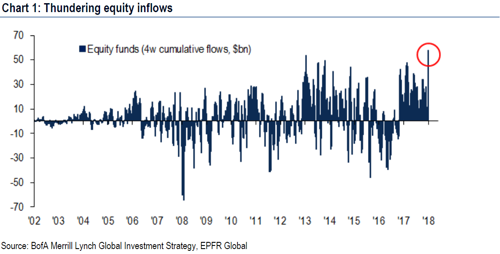February 2, 2018 Lesjak Planning Perspective
February 2, 2018 Lesjak Planning Perspective
February 2, 2018 by Lesjak Planning
The economy here in the States, as well as the rest of the developed world, continues to improve. In the fourth quarter of 2017, 70% of all companies reporting beat their earnings forecasts and nearly 72% beat their revenue forecasts.
Our weaker dollar has helped the overseas market returns explode to the upside as realized in U.S. dollar terms. Interest rates are on the rise and the consensus is that there are 3 more rate increases coming yet this year. These increases help savers as bank rates increase. Although bond rates go up also, current bond holders are seeing their principal values decline as the rates rise.
Manufacturing in the U.S. continues to increase and the unemployment rate nears 4% which historically signals full employment.
While we very well may experience a pullback from these current levels, a well-diversified portfolio can both reduce the downside risk, and also keep you from emotionally bailing out of a longer term bull market during a short term correction. We continue to believe that we have years left in this current positive market climate, as market leaders tend to rotate. As an example, most of the better performing stocks over the past 15 years have been companies with weak balance sheets and large loan balances. During that period low interest notes allowed these companies to borrow and use the proceeds to pay dividends or to repurchase their own stock which normally drives share prices higher.
As interest rates rise, these same companies will have to service their increased debt at higher costs which will reduce revenue and their ability to make payments to shareholders. Strong companies with solid balance sheets and little debt may very well take over leadership on the next leg up.
As long term investors, you know by experience that markets are unpredictable in the short term and may experience a pullback tomorrow or may continue climbing for years. We also know from experience that the various market sectors such as stocks, bonds, real estate, precious metals, commodities, and international markets continually ebb and flow with no advance warning.
With diversification across these sectors as investors, risk can be reduced in rising markets and corrections when they come, as well.

But with all of the good numbers in the news, we are beginning to see reasons for caution, at least in the short term
Analysts are calling the market run of the last 10 years “the most hated bull market in history!” For the entire duration the “experts” have opined that the gains could not last and another significant correction was imminent. The markets kept defying all naysayers and recently has gone 2,350 days without a 15% price correction. This brings back memories of the same performance in the 1980’s and the record 3,500 days in the 1990’s.
Reasons that now call for caution include the fact trading activity in the equity markets has risen substantially recently, along with reports of $58 billion of new money flowing into stock funds in the past four weeks (see chart below). This action reminds us of past markets where investors jump into stocks to try to play catch up for all of the missed performance since 2009. Historically, this has not ended well for the latecomers.












































About the author
Lesjak Planning